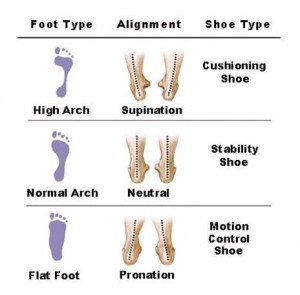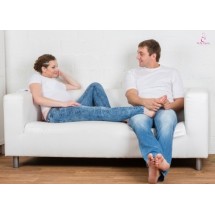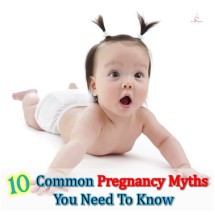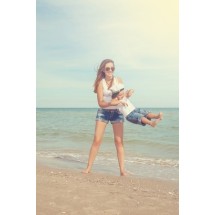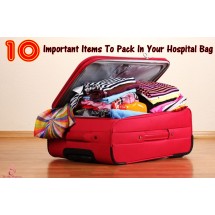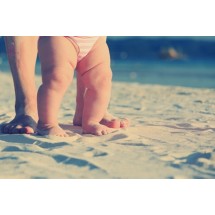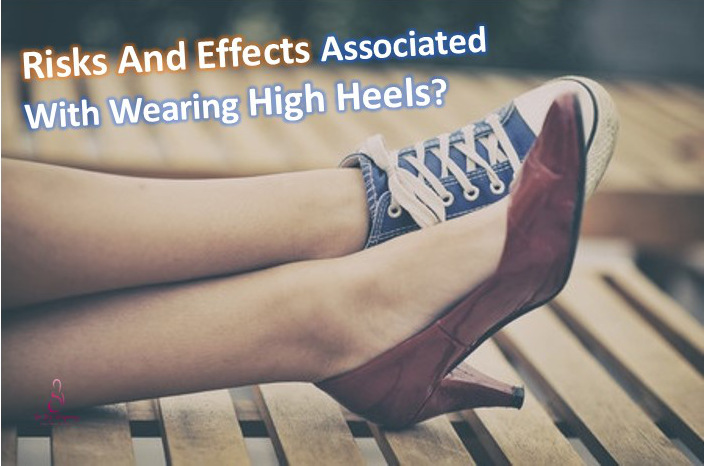 Christian Louboutin once said, “The higher the heels, the better!” Well, not quite. Foot pain amongst women is considered a common phenomenon today and the problem can be attributed to the prolonged use of ill-fitting shoes or footwear that forces the feet into unnatural shapes. Statistics have shown that one in 10 women wear high heels at least 3 days a week and more than 30% of these women have fallen at least once while wearing heels. Although regarded as a fashion statement, high heels which are 2 inches or higher are generally not encouraged for frequent and extended use as they pose to be the major cause of foot problems in women.
Christian Louboutin once said, “The higher the heels, the better!” Well, not quite. Foot pain amongst women is considered a common phenomenon today and the problem can be attributed to the prolonged use of ill-fitting shoes or footwear that forces the feet into unnatural shapes. Statistics have shown that one in 10 women wear high heels at least 3 days a week and more than 30% of these women have fallen at least once while wearing heels. Although regarded as a fashion statement, high heels which are 2 inches or higher are generally not encouraged for frequent and extended use as they pose to be the major cause of foot problems in women.
Some of the common risks and effect associated with wearing high heels are….
1. High Heels & Muscle Aches
Think of our feet as the ultimate shock absorbers for our body, cushioning us from endless days of activities. Now think about squeezing these precious absorbers into an awkward pair of high stilettos and sashaying around in tip-toeing manner, for a big part of the day. High heels force the feet in an abnormally flexed (downward) position, thus straining the calf muscles and limiting our ankle movements during activity. In order to compensate for the awkward position, the foot muscles tend to “overwork.” Ladies may complain of feet and calves aches after a long day of wearing high heels. With the feet constantly pointing downwards in a flexed position, you tend to lean backwards to compensate for balance. This overarching of the back creates a lot of strain on the lower back, hip & knees.
2. High Heels & Toe Problems
Most high heels have a narrow front. Ladies may find that they have to “squeeze” their feet into high heel shoes especially if they are flatfooted or have a broad forefoot. This constricts the toes into a narrow space. A common foot ailment amongst ladies would be painful callouses (hard skin) over the sole of the foot and toes and bunion deformity. Occasionally, some ladies may even develop claw toes, with the toes digging down into the soles of your shoes and creating painful calluses.
3. High Heels & Heel Pain
When a lady is walking around on high heels there is lot of point pressure on the heel, giving rise to plantar fascia inflammation. The plantar fascia is a structure on the sole of our feet that’s helps to maintain our arch and help with toe push-off. Some women may present with heel pain. There is also a lot of stress on the toes and with repeated walking and pushing off on heels, there may a chronic stress injury to the metatarsals (toes). These are stress fractures and patients may present with foot swelling and pain.
4. High Heels and Ankle Problems
With the heel and ankle high off the ground, maneuvering uneven surfaces may be a challenge to some women on high heels. They may easily sprain their ankle. Sometimes even making a quick turn may pose a problem. This is particularly a problem to some women who may have lax ligaments or pregnant ladies. There is also a lot of force passing through the ankles and repeated loading on the ankle may lead to cartilage overload and injuries to the ankle cartilage.
So, do you have to give up on your favourite heels?
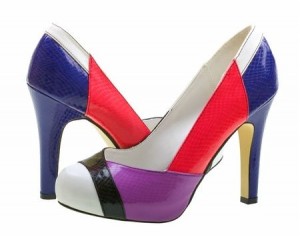 Wearing of high heels occasionally for meetings or dinner outings is fine if balanced with an appropriate use of other comfort footwear. There is generally no rule on the advisable high heel height as it really depends very much on the person’s height, build and foot shape. Alternating the shoe choice from one day to another is another alternative. If you are regular high heel wearer, take time everyday to stretch your calf muscles & feet.
Wearing of high heels occasionally for meetings or dinner outings is fine if balanced with an appropriate use of other comfort footwear. There is generally no rule on the advisable high heel height as it really depends very much on the person’s height, build and foot shape. Alternating the shoe choice from one day to another is another alternative. If you are regular high heel wearer, take time everyday to stretch your calf muscles & feet.
If you have to pick a shoe, it is best to choose a pair of low heel shoes that is stable and comfortable. Also some stretching of the calf muscles and the plantar fascia can help in relieving some of the aches and pains.
It is advisable to get an assessment with a foot & ankle specialist if you have painful hard skin in the foot or if you think that you have either flatfeet or a high arched feet. Getting the appropriate shoes or insoles after an assessment can go a long way in taking care of your bones and tendons of the foot, as well as keeping you comfortable.
How do you choose the right shoes to wear?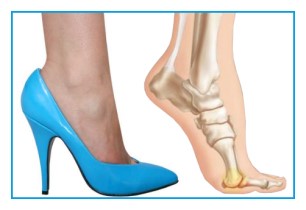
Getting the right pair of shoes need not be a difficult task. Here are some simple tips to get you started!
1. Know your foot type
Foot type is commonly described according to the type of arch you have. That is the curving hollow on the inner side of your foot. There are generally 2 foot types- a high arch & a low arch foot.
A high arched foot is something that needs to be pampered with a shoe that is flexible and has good cushioning. A low arched foot is one that needs a shoe with greater stability and arch support. Patients with a low arch foot may tend to experience heel pain, calf ache or even knee pains due to an overall abnormal alignment of the lower limb.
Another important consideration is how wide the front of your foot is. Some ladies have a narrow & slender toe shape whereas some ladies have a broad front foot. It’s advisable to get a shoe with a slightly broader front to accommodate the front of our feet.
If you are unsure of your foot type, it is best to visit a foot & ankle orthopedic specialist who can make the correct assessment.
2. Match your shoes to your activity
It is important to have the right footwear for the right activities. If you are formally dressed, fashion has to be balanced with care for the foot. One way is to alternate high heels with another comfortable pair of shoes during the day when you are at the desk. If you are constantly on the move, it is best to have shoes with heel support and flexibility.
If you are into sports & running its important to have an appropriate pair of shoes as well. Having the inappropriate shoes for sports can cause injuries to your tendons and bones.
3. Foot health
Ultimately, we have to take care of our feet as we take thousands of steps very day. Having the correct footwear will prevent calluses and blisters. It is also important to exercise & stretch the foot and calf muscles to prevent tiredness and strength the muscles. In some women who may have a high or low arched foot shape, customized insoles may be necessary. Your feet sometimes need to be assessed by a foot & ankle orthopedic specialist who can best advise you.
 By Dr Kannan Kaliyaperumal
By Dr Kannan Kaliyaperumal
Orthopaedic Surgery
Practice Address/es:
Mount Elizabeth Medical Centre
Address: 3 Mount Elizabeth #11-13/14/15
Singapore 228510
Tel: 6738 2628

